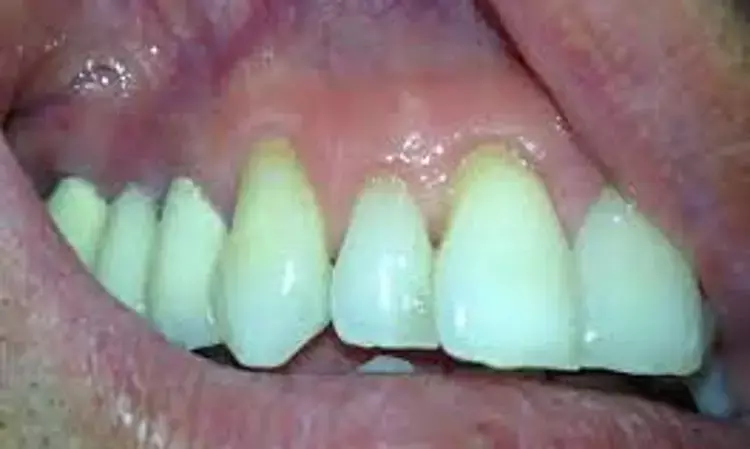- Home
- Medical news & Guidelines
- Anesthesiology
- Cardiology and CTVS
- Critical Care
- Dentistry
- Dermatology
- Diabetes and Endocrinology
- ENT
- Gastroenterology
- Medicine
- Nephrology
- Neurology
- Obstretics-Gynaecology
- Oncology
- Ophthalmology
- Orthopaedics
- Pediatrics-Neonatology
- Psychiatry
- Pulmonology
- Radiology
- Surgery
- Urology
- Laboratory Medicine
- Diet
- Nursing
- Paramedical
- Physiotherapy
- Health news
- Fact Check
- Bone Health Fact Check
- Brain Health Fact Check
- Cancer Related Fact Check
- Child Care Fact Check
- Dental and oral health fact check
- Diabetes and metabolic health fact check
- Diet and Nutrition Fact Check
- Eye and ENT Care Fact Check
- Fitness fact check
- Gut health fact check
- Heart health fact check
- Kidney health fact check
- Medical education fact check
- Men's health fact check
- Respiratory fact check
- Skin and hair care fact check
- Vaccine and Immunization fact check
- Women's health fact check
- AYUSH
- State News
- Andaman and Nicobar Islands
- Andhra Pradesh
- Arunachal Pradesh
- Assam
- Bihar
- Chandigarh
- Chattisgarh
- Dadra and Nagar Haveli
- Daman and Diu
- Delhi
- Goa
- Gujarat
- Haryana
- Himachal Pradesh
- Jammu & Kashmir
- Jharkhand
- Karnataka
- Kerala
- Ladakh
- Lakshadweep
- Madhya Pradesh
- Maharashtra
- Manipur
- Meghalaya
- Mizoram
- Nagaland
- Odisha
- Puducherry
- Punjab
- Rajasthan
- Sikkim
- Tamil Nadu
- Telangana
- Tripura
- Uttar Pradesh
- Uttrakhand
- West Bengal
- Medical Education
- Industry
Patch test and biopsies may help detect gingival hypersensitivity reactions to oral hygiene products

Patch test and biopsies may aid in the detection of gingival hypersensitivity reactions to oral hygiene products suggests a new study published in the Journal of American Dental Association.
Hypersensitivity reactions to toothpaste are rare. The objective of this study was to present the authors' clinical cases in the past 10 years and perform a scoping review of gingival hypersensitivity responses to toothpaste. The authors reviewed records of documented gingival hypersensitivity reactions to dentifrices at the Postgraduate Clinic of Oral Medicine, Complutense University, Madrid, Spain, from January 2013 through December 2022. Furthermore, the authors conducted a search in PubMed with no date limit for articles reporting these hypersensitivity responses up through October 18, 2023. Results: Eleven cases were collected from the clinic. Eight gingival hypersensitivity reactions occurred in women, and 6 were associated with cinnamon. The most frequent lesions diagnosed were red gingiva. The discontinuation of the toothpaste led to the disappearance of the lesions. The search yielded 643 references. Thirteen articles were included in the scoping review, all of them case series and case reports, reporting 32 cases. Lesions affected middle-aged women most frequently, the most common hypersensitivity reaction was gingival redness, and the cases implicated toothpastes containing cinnamon and herbal composition. This study provides clues for diagnosing and treating hypersensitivity reactions to toothpaste, which may improve the identification, management, and reporting of these cases.
Reference:
López-Pintor RM, González-Serrano J, Ivaylova Serkedzhieva K, Serrano Valle J, de Arriba L, Hernández G, Sanz M. Gingival hypersensitivity reactions to toothpaste: A case series and scoping review. J Am Dent Assoc. 2024 Jan 11:S0002-8177(23)00680-3. doi: 10.1016/j.adaj.2023.11.003. Epub ahead of print. PMID: 38206258.
Keywords:
Patch test, biopsy, detection, gingival, hypersensitivity reactions, oral hygiene products, López-Pintor RM, González-Serrano J, Ivaylova Serkedzhieva K, Serrano Valle J, de Arriba L, Hernández G, Sanz M, Journal of American Dental Association, Hypersensitivity reactions; allergic reactions; dentifrice; gingiva; hypersensitivity response; toothpaste.
Dr. Shravani Dali has completed her BDS from Pravara institute of medical sciences, loni. Following which she extensively worked in the healthcare sector for 2+ years. She has been actively involved in writing blogs in field of health and wellness. Currently she is pursuing her Masters of public health-health administration from Tata institute of social sciences. She can be contacted at editorial@medicaldialogues.in.
Dr Kamal Kant Kohli-MBBS, DTCD- a chest specialist with more than 30 years of practice and a flair for writing clinical articles, Dr Kamal Kant Kohli joined Medical Dialogues as a Chief Editor of Medical News. Besides writing articles, as an editor, he proofreads and verifies all the medical content published on Medical Dialogues including those coming from journals, studies,medical conferences,guidelines etc. Email: drkohli@medicaldialogues.in. Contact no. 011-43720751


